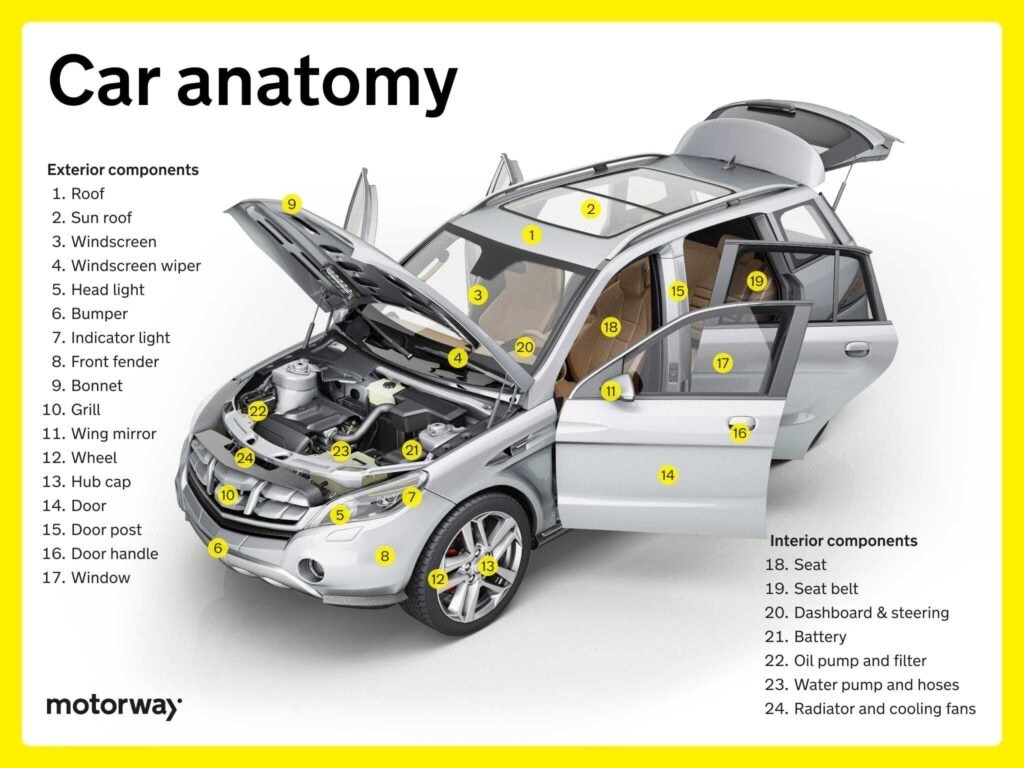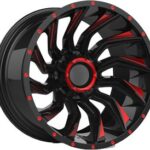Being a responsible car owner goes hand-in-hand with understanding your vehicle. Proactive maintenance is key to longevity and safety, but delving into the mechanics can feel overwhelming. One common question that arises when considering car maintenance and repair is: how many parts are in a car?
It’s a question that might surprise you. Far from being a simple machine, a modern car is an incredibly complex assembly of components working in harmony. Understanding the basic anatomy of your car, from the engine to the wheels, empowers you to make informed decisions about its care and appreciate the engineering marvel beneath the surface.
Let’s explore the fascinating world of car parts and uncover the key components that make up these complex machines.
Decoding the Number: Just How Many Parts Are in a Car?
While the exact number can vary depending on the model, complexity, and year of manufacture, a modern car typically contains over 30,000 individual parts. This staggering figure highlights the intricate engineering and manufacturing processes involved in creating the vehicles we rely on daily.
This number encompasses everything from major assemblies like the engine and transmission to tiny fasteners, clips, and electronic components. Breaking down a car into its core systems helps to manage this complexity and understand how these thousands of parts contribute to the overall function.
Engine Components: The Heart of the Automobile (Numerous Moving Parts)
The engine is arguably the most complex system in a car, containing hundreds of intricately engineered parts working in concert to generate power.
Cylinder Block and Pistons: The Powerhouse Foundation
The cylinder block acts as the engine’s foundation, housing the cylinders where combustion occurs. Pistons move within these cylinders, driven by combustion, converting explosive energy into mechanical force. Each piston itself is composed of multiple parts like piston rings, contributing to the overall engine part count.
Crankshaft and Camshaft: Orchestrating Motion
The crankshaft transforms the linear motion of the pistons into rotational energy, the driving force of the car. The camshaft, meanwhile, precisely controls valve timing for efficient combustion. These rotating components, with their bearings and gears, add significantly to the engine’s internal parts.
Intake and Exhaust Manifolds: Breathing Apparatus
The intake manifold channels air into the engine for combustion, while the exhaust manifold expels gases after combustion. These manifolds, along with gaskets and mounting hardware, are essential parts of the engine’s air management system.
Powertrain and Gearboxes: Transferring and Managing Power (Gears Galore!)
The powertrain system is responsible for transmitting the power generated by the engine to the wheels. This system, including the gearbox, differential, and driveshaft, is composed of numerous gears, shafts, and couplings.
Different Types of Gearboxes (Transmissions): Manual, Automatic, and CVT
Gearboxes, also known as transmissions, manage engine speed and torque to suit driving conditions.
Manual Gearboxes: Driver-Controlled Complexity
Manual gearboxes involve driver-controlled gear changes using a clutch and gear stick. Internally, they contain numerous gears, shafts, synchronizers, and linkages, all contributing to a substantial parts count.
Automatic Gearboxes: Smooth and Self-Shifting
Automatic gearboxes simplify driving by automatically shifting gears. These are even more complex than manual transmissions, featuring planetary gear sets, hydraulic control systems, and a torque converter, significantly increasing the number of parts.
CVTs (Continuously Variable Transmissions): Seamless Acceleration
CVTs offer a seamless driving experience with an infinite range of gear ratios using pulleys and belts. While they might seem simpler in operation, their internal mechanisms still involve a considerable number of components for precise control.
Differential and Driveshaft: Distributing Power to the Wheels
The driveshaft carries power from the transmission to the differential. The differential then distributes power to the wheels, allowing them to rotate at different speeds during turns. Both these systems contain multiple bearings, joints, and gears to ensure smooth power delivery.
Clutch and Torque Converter: Engaging and Transferring Power
The clutch (in manual transmissions) and torque converter (in automatic transmissions) play crucial roles in engaging and transferring power from the engine to the gearbox smoothly. Each of these assemblies contains numerous friction plates, springs, and fluid couplings, adding to the overall parts count.
Fuel and Ignition Systems: Enabling Combustion (Precision in Delivery)
The fuel and ignition systems are critical for delivering fuel and initiating combustion within the engine cylinders. These systems utilize precise components to ensure efficient engine operation.
Fuel Injection System: Precise Fuel Delivery
Modern engines use fuel injection systems to precisely deliver fuel into the cylinders. Fuel injectors themselves are intricate devices with tiny nozzles and electronic controls. The system also includes fuel pumps, fuel lines, and filters, all contributing to the part count.
Spark Plugs and Ignition Coils: Initiating Combustion
Spark plugs ignite the fuel-air mixture in the cylinders, while ignition coils provide the high voltage spark. Each cylinder requires a spark plug, and often a dedicated ignition coil, increasing the number of parts, especially in multi-cylinder engines.
Throttle Body and Air Intake System: Controlling Airflow
The throttle body regulates airflow into the engine, and the air intake system ensures clean air supply. These systems include sensors, valves, filters, and ductwork, all contributing to the overall number of components.
Cooling and Lubrication: Maintaining Optimal Temperature and Smooth Operation (Fluids and Filters)
To prevent overheating and ensure smooth operation, cars rely on cooling and lubrication systems, each comprised of multiple parts.
Radiator and Cooling Fans: Dissipating Heat
The radiator dissipates heat from the engine coolant, while cooling fans enhance airflow for better cooling. These systems include hoses, clamps, and thermostats, all contributing to the part count.
Water Pump and Hoses: Circulating Coolant
The water pump circulates coolant throughout the engine, and hoses provide pathways for coolant flow. These components, along with seals and connectors, are essential parts of the cooling system.
EV Battery Cooler System: Thermal Management for Electric Vehicles
Electric vehicles have specialized battery cooler systems to manage battery temperature. While different from traditional radiators, these systems still involve pumps, cooling plates, fans, and sensors, contributing to the EV’s part count.
Oil Pump and Oil Filter: Engine Lifeline
The oil pump circulates engine oil for lubrication, and the oil filter removes impurities. These components, along with oil lines and sensors, are crucial for engine longevity and contribute to the overall number of parts.
Electrical System: Powering Everything (Wires and Connections)
The electrical system is the nervous system of the car, powering everything from the engine to the accessories. This system includes miles of wiring, hundreds of connectors, and numerous electronic components.
Battery: The Initial Power Source
The car battery provides the initial power to start the engine and operate electrical components. Even a simple battery consists of multiple cells, plates, and connectors.
Alternator: Recharging and Powering
The alternator recharges the battery and powers the electrical system while the engine is running. This component is a complex assembly of windings, diodes, and regulators.
Starter Motor and Solenoid: Initiating Engine Start
The starter motor and solenoid work together to crank the engine and initiate the combustion process. These are robust electrical-mechanical components with numerous internal parts.
Wiring Harness and Fuses: Electrical Pathways and Protection
The wiring harness distributes electricity throughout the car, and fuses protect circuits from overloads. The sheer length of wiring and the number of fuses and relays contribute significantly to the total part count.
Suspension and Steering: Ensuring Ride Comfort and Control (Joints and Linkages)
The suspension and steering systems work together to provide a comfortable ride and precise vehicle control. These systems are composed of numerous linkages, joints, and damping components.
Shock Absorbers and Struts: Dampening Bumps
Shock absorbers and struts dampen vibrations and control vehicle movement, providing a smoother ride. Each shock absorber or strut is an assembly of pistons, valves, and springs.
Control Arms and Bushings: Connecting Suspension to Frame
Control arms connect the suspension to the car’s frame, and bushings provide flexibility and reduce noise and vibration. Each control arm utilizes bushings and ball joints, adding to the parts count.
Power Steering Pump and Rack: Effortless Steering
The power steering pump provides hydraulic assistance, and the steering rack translates steering wheel input into wheel movement. These systems include pumps, hoses, and complex valve mechanisms.
Braking System: Ensuring Safety (Friction and Hydraulics)
The braking system is paramount for safety, allowing the driver to control the vehicle’s speed and bring it to a stop. This system relies on friction and hydraulic pressure, utilizing multiple components at each wheel.
Brake Pads: Friction for Deceleration
Brake pads create friction against the rotors to slow the vehicle. Each brake pad is a composite material bonded to a backing plate, and cars have multiple pads.
Brake Calipers: Applying Pressure
Brake calipers house pistons that press the brake pads against the rotors. Each caliper contains pistons, seals, and mounting hardware, contributing to the parts count at each wheel.
Exhaust System: Managing Emissions and Noise (Pipes and Mufflers)
The exhaust system manages exhaust gases and reduces engine noise. This system, running the length of the car, includes several components.
Catalytic Converter: Reducing Harmful Emissions
The catalytic converter reduces harmful pollutants in exhaust gases. This device contains precious metals and a complex internal structure.
Muffler and Resonator: Quieting the Engine
The muffler and resonator reduce engine noise. These components are designed with internal chambers and baffles to attenuate sound waves.
Oxygen Sensors: Monitoring Exhaust Gases
Oxygen sensors monitor exhaust gas composition for optimal engine control. These sensors are electronic devices that provide feedback to the engine management system.
Interior Components: Comfort and Convenience (From Seats to Switches)
The interior of a car, while focused on aesthetics and comfort, also contains numerous parts, from seats and dashboards to intricate electronic controls.
Seats & Their Belts: Safety and Support
Seats provide comfort and support, and seat belts ensure occupant safety. Each seat is an assembly of frames, padding, upholstery, and adjustment mechanisms. Seatbelts include retractors, buckles, and webbing.
Dashboard & Steering Functions: Command Center
The dashboard displays vital information, and the steering wheel incorporates various controls. The dashboard is a complex assembly of panels, gauges, vents, and wiring. The steering wheel includes switches, wiring, and sometimes airbags.
Exterior Components: Aesthetics and Protection (Panels and Lights)
The exterior of a car is composed of body panels, lights, trim, and various functional components, all contributing to the total parts count.
Features & Controls on Doors: Entry and Convenience
Doors provide entry and incorporate features like windows, locks, and mirrors. Each door includes panels, glass, regulators, latches, hinges, and wiring for power features.
Wheels and Tyres: Road Contact and Motion (Rolling Assemblies)
Wheels and tires are the car’s point of contact with the road. Each wheel and tire assembly, along with related components, adds to the overall part count.
Types of Tyres and Their Functions: Grip for Every Condition
Different types of tires are designed for specific conditions. Even a single tire is constructed from multiple layers of rubber, steel belts, and fabric plies.
Wheel Construction Guide: Alloy vs. Steel Wheels: Material and Design
Wheels can be made of alloy or steel and come in various constructions. Each wheel, regardless of material or construction, is a manufactured part with its own components.
Tyre Pressure Monitoring System (TPMS): Safety Monitoring
The TPMS monitors tire pressure for safety and efficiency. Each TPMS sensor is a small electronic device mounted in the wheel, adding to the car’s electronic component count.
FAQs
What parts are under a car?
Beneath the car’s body, you’ll find essential systems like the engine, transmission, suspension, exhaust system, and fuel system – all comprised of thousands of individual parts working together.
How many car parts are on a car?
As explored, modern cars can contain over 30,000 individual parts, a testament to the complexity of automotive engineering. Electric vehicles, while having fewer engine parts, still contain thousands of components in their battery systems, chassis, and other areas.
What are the important parts of a vehicle?
Critical parts include the engine, transmission, braking system, steering system, suspension, and electrical components. However, in a system as complex as a car, every part plays a role in the overall function and safety.
What parts of a car can be sold separately?
Many car parts can be sold individually, including engines, transmissions, body panels, and specific electrical components. This aftermarket for car parts highlights the modular nature of vehicle construction.
Why is there a shortage of car parts?
Global events, supply chain disruptions, and increased demand can lead to car part shortages, impacting production and repair timelines. The sheer number of different parts in a car makes the supply chain particularly vulnerable.
Need to Sell Your Car?
Understanding the complexity of a car, and the sheer number of parts it contains, can deepen your appreciation for your vehicle. Whether you’re maintaining your current car or considering selling it, informed knowledge is power.
Want to learn more about car ownership, maintenance, and selling your car? Explore our guides here for everything you need to know.


